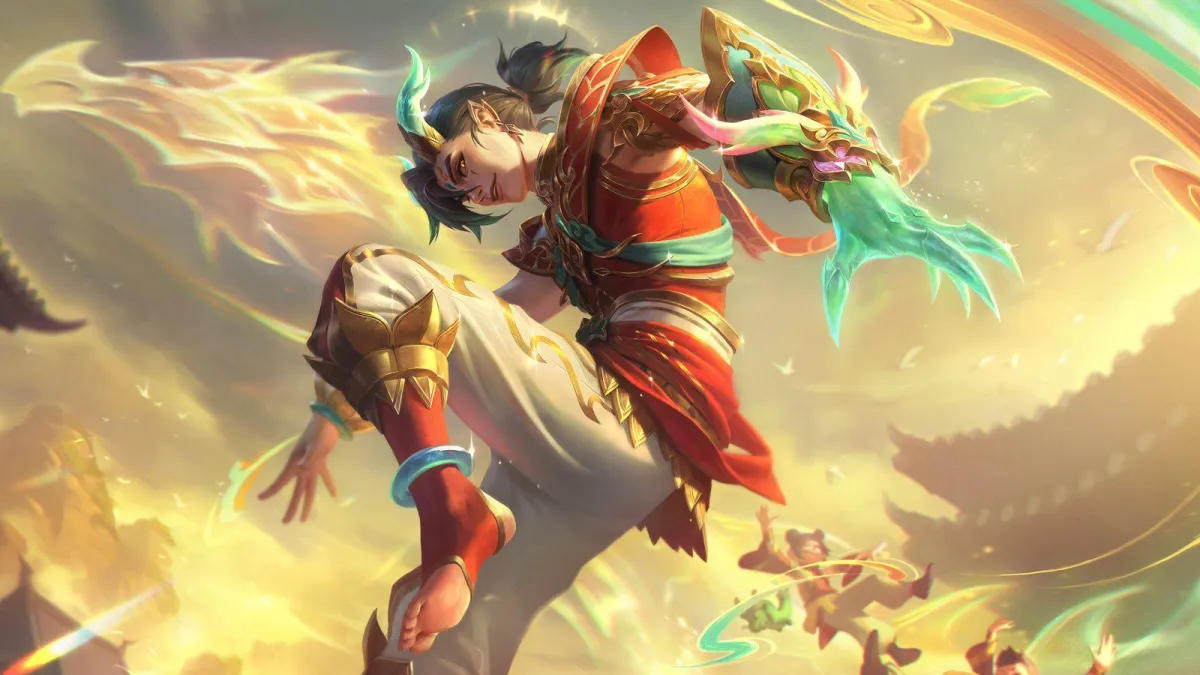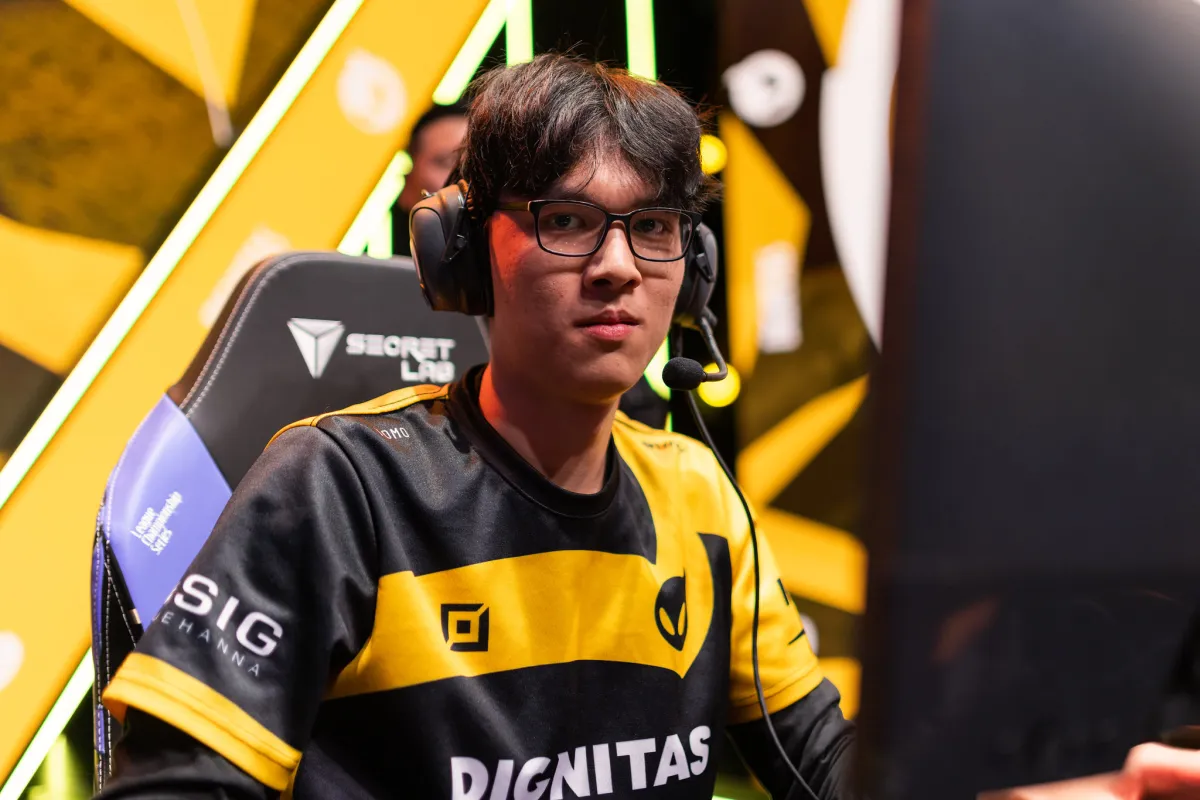Evil Geniuses has announced the release of its esports analytics platform, Factor.gg. The platform is built off of its own internal analytics tool and will be available to the community for no cost. The website will provide data, insights through its content, graphics and power rankings through its Performance Objectively Weighted and Rated index. POWR is a new rankings system for League of Legends, developed by the data scientist at Evil Geniuses, that takes data from professional matches and uses about 30 metrics to calculate team and player rankings.
The website also hosts 19 different metrics for players and 29 for teams, then ranks them according to their league. The statistics include the standard Kill/Death/Assist ratio and averages at 10 minutes into the game. It also has new numbers not available on other platforms like average minutes between deaths, kills and average solo kills. Factor even has certain subjective numbers modeled like average worthless deaths, along with average damage per team fight.
“We want esports analytics to become the norm and help educate the fan base and provide more levels of engagement and a chance to analyze the game,” Chris DeAppolonio, Chief Innovation Officer at Evil Geniuses said.
Factor will also feature written articles and content crafted around its statistics and analytics. Its creators compare the website to traditional sports fans statistical websites like FanGraphs and Sports Reference.
“It’s great to have a really big table with a bunch of numbers, but that’s kind of boring,” Evil Geniuses’ Director of Technology and Analytics, Zach Kamran said. “What’s really interesting is the storylines behind the data.”
The project and its systems came to be for Evil Geniuses because their previous process of interpreting and logging data was incredibly labor intensive.
“When we worked with our Evil Geniuses coaches for internal tools, one of the big things we kept hearing was like, wow, they do a lot of manual work,” Kamran said. “And people who are fans do a lot of manual work when they’re watching League of Legends games and trying to figure out what happened.”
How POWR is used
POWR is the backbone of Factor. The team will continue to create new metrics for the game, but the website bases its rankings, and its win probabilities, around the number. The metric is a combination of the many statistics Factor gathers over time and puts it through different algorithmic systems to churn out a number to represent a player or team’s POWR rating.
Factor will start with coverage and data from the North American, European, South Korean and Brazilian leagues and branch out to others in the coming months. The data gathered comes from League of Legends data distributor Bayes Esports Solutions, which gives out data for the aforementioned leagues and other esports competitions like Counter Strike: Global Offensive at DreamHack and Electronic Sports League.
POWR is a changing number that can adapt between metas according to Kamran. The algorithm tells whether what a player is doing in-game contributes to their team winning a game. So if on one patch that’s damage, and on the next one it’s healing, POWR should adapt and create a figure to gauge player performance throughout the year.

“Theoretically last week, damage in teamfights was super important to a team winning. So players who did really well in that statistic will go up in the ranking,” Kamran said. “But maybe, there’s a patch change, and that doesn’t matter as much anymore. It will then take that into account by saying last week actually that didn’t really matter and this other thing mattered.”
“Because we collect data from so many games, we’re sort of able to say, in all of the games, as a whole, this is what mattered.”
POWR also weighs more heavily towards recent games, so previous performances do not impact its rating over time. This does mean players with less data can have inflated ratings, but they will level out in time. The rating also won’t take into account the outcome of the game as a weighted number, so it sticks strictly with the individual’s performance.
“Everybody has a down game sometimes and POWR is a really interesting way to tell storylines around how sometimes you have a bad week, sometimes you have a good week, but overall, you’re still a good player,” Kamran said.
While Evil Geniuses has used these models internally to help with the normally manual process of inputting different statistics and player evaluations, it’s not a fool proof indicator of skill or talent for new players.
“It’s not something that you could just say, like this number predicts like this player is going to be perfect,” DeAppolonio said. “There’s a way to help filter talent using data. But at the end of the day, even in traditional sports, it’s a mix of both. That quantitative information, and then the qualitative look from somebody who knows the space.”
For win probability, the metric is recalculated after each match and does not change based on the team’s draft. Factor will calculate win probability as the match happens, but a live calculation is not currently live on its website yet.
Iterating statistics and models
From statistics like worthless deaths and average damage per teamfight, the team at Evil Geniuses iterated on models that followed player positions and damage numbers. The team then showed what they found out from their own internal staff, experts in League of Legends like their own coaches and analysts, to see how accurate the model was.
“We iterate, and then we come back and we say, ‘Okay, how about this one?’ And they say, ‘yeah, that actually looks pretty accurate,’’ Kamran said. “A lot of what we do is codifying that coach into a programmatic algorithm.”
Factor also features a match replay function with an event timeline, a gold graph and a 2D display of the entire game. Fans and coaches can watch where a player is on the map at what time in the game. The event log also displays the state of the game on each event.
Clicking on the first blood event in the timeline will display each player’s build, gold, KDA stat and experience levels. Event stats are also here, flowing from jungle camp kills, turret plates taken, kills and more.
The 2D replay function is one of the more notable additions as it takes away the hassle of players, fans, coaches and analysts squinting at a replay’s mini map, or pausing at the correct moment, to find a player’s position in a certain play.

“Because there’s been lack of access to potential replay files for the community, as well as, if you want to go replay a match and watch a match over, without pro view, you’re kind of stuck seeing one player’s perspective,” DeAppolonio said. “It’s very hard to see what’s going on at a macro level, on the map where everyone’s position is at all times.”
Each profile brings up the various statistics measured on Factor, as well as recent matches and their champion pool, on one page. The champion pools also feature win rates and pick rates. Statistical rankings compared to other players in the league are also here.
Factor and the community
The idea repeated the most by Kamran and DeAppolonio, was how Factor was created, and released, for the community to better understand League of Legends analytics and change the conversation around the numbers.
The website even features a glossary page explaining the different acronyms, their definitions and how to use the term in a sentence.
“We don’t just want to give people stats, we want to give storylines, and educate and give to the community,” Kamran said. “So we provided this page where you can dive into all the different stats that we have and some that we maybe don’t even have yet.”
The website will also showcase articles written around statistics and analytical thinking. For example, an article might go into the statistically-correct All-Pro Teams, or compare one player to another with numbers available on Factor.
As previously mentioned, Evil Geniuses are releasing this information at no cost despite what may be a hit to potential profits created by an extensive POWR tool such as Factor.
“How much money could we lose? I don’t know. I don’t even want to calculate that because I think my CEO might be a little mad,” DeAppolonio said with a chuckle.








